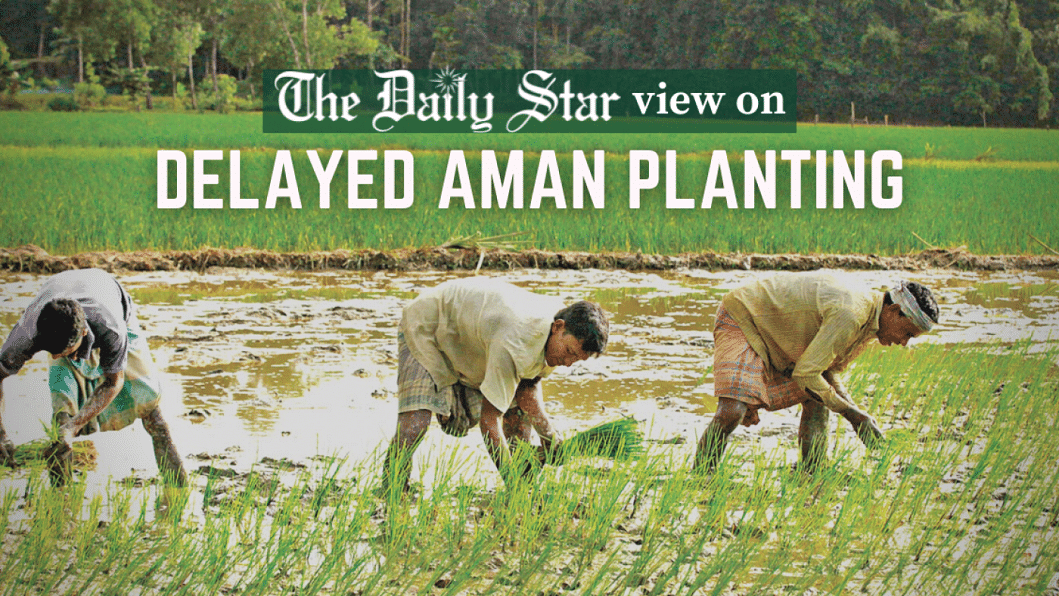Govt support needed for Aman production

We are concerned to learn that the production of Aman paddy – the second biggest crop after Boro in the country – may be hampered this year due to delayed planting of seedlings. Reportedly, farmers planted 2.30 lakh less seedlings this season compared to the same three-month period last year. The main reasons for the delay are the unusual temperatures and rainfall patterns of this year, as well as increased fuel costs for irrigation.
Aman is a rain-fed crop that requires sufficient rain before the seedlings can be planted. But in the past three months, the average rainfall has been unusually low, with as little as 243mm of rain in August – the lowest since 1989. Coupled with the hike in fuel prices pushing up costs of irrigation, as well as the fear of flooding that made farmers wait for the right time to plant, the end result has been that farmers have fallen behind the planting target.
According to the Department of Agricultural Extension (DAE), farmers have planted seedlings on 48.90 lakh hectares this year, against the target of planting on 56.20 lakh hectares of land. This is far behind the cultivation target achieved in the previous year. Although farmers now have a second option to plant a late variety of Aman, this reportedly has a lower yield in comparison to the main variety. Since Boro and Aus productions were also hampered this year due to severe flooding, an insufficient harvest of Aman will raise serious concerns about grain shortage in the coming days. At a time when the people are already struggling to cope with the increasing costs of living, food grain shortages could have terrible impacts on food security, especially in the most marginalised populations.
Since the late variety of Aman can be planted till mid-September, the government must immediately ensure there is no scarcity of seedlings for farmers. The DAE should encourage more farmers, especially in flood-affected areas, to plant the late variety. The government must also ensure that farmers have access to uninterrupted power supply for irrigation. Equally importantly, it needs to provide them with diesel and fertiliser at subsidised prices to relieve their burden of increased production costs. We can only expect a better harvest of Aman if all the necessary support is provided to our farmers. And in the long run, the authorities need to come up with proper strategies and policies to support farmers and ensure stable crop production cycles that are rooted in the understanding that what we are now witnessing are not erratic weather patterns, but the very real impacts of climate change.

 For all latest news, follow The Daily Star's Google News channel.
For all latest news, follow The Daily Star's Google News channel. 







Comments